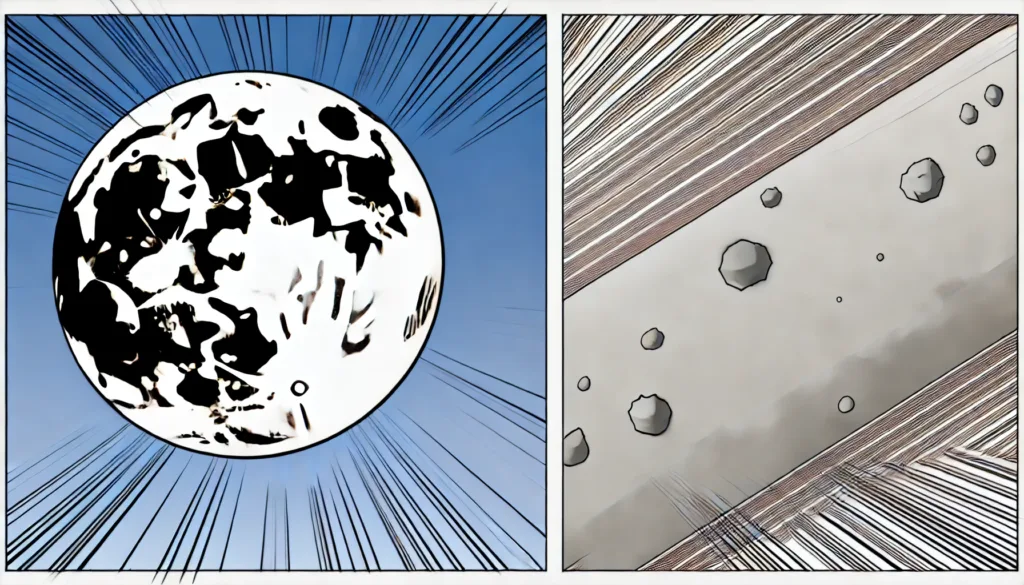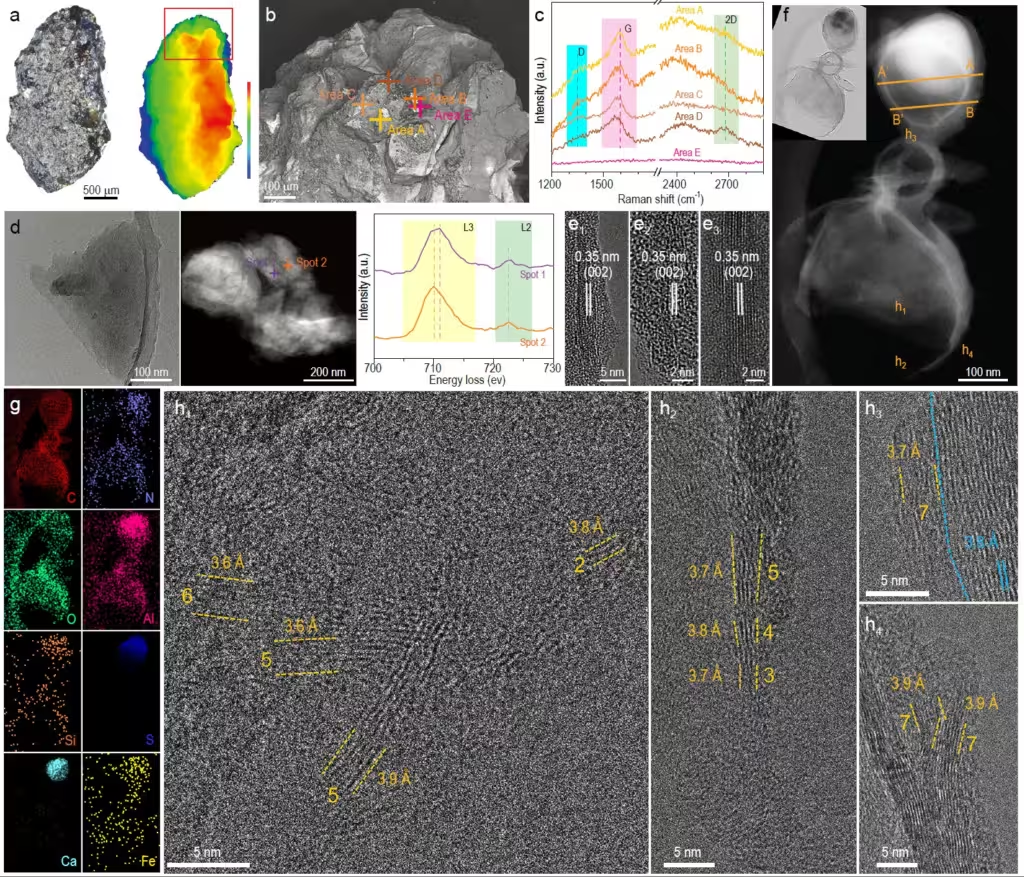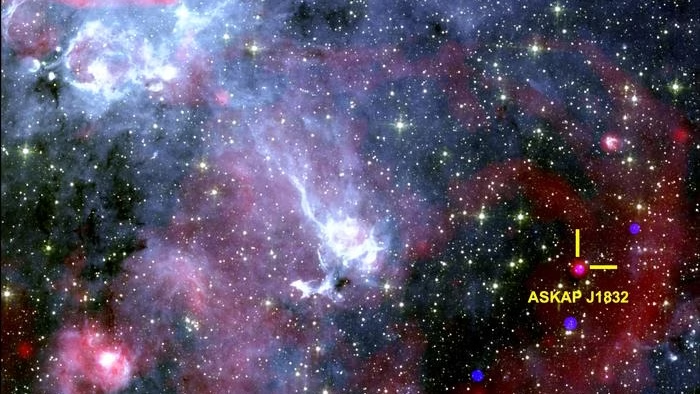Researchers from Jilin University in China have discovered naturally formed few-layer graphene in lunar soil, potentially aiding inexpensive graphene production on Earth.
From Science China Press 17/08/24

A study, published in National Science Review, reveals the existence of naturally formed few-layer graphene, a substance consisting of carbon atoms in a special, thin-layered structure.
The team, led by professors Meng Zou, Wei Zhang and senior engineer Xiujuan Li from Jilin University and Wencai Ren from the Chinese Academy of Sciences’ Institute of Metal Research, analyzed an olive-shaped sample of lunar soil, about 2.9 millimeters by 1.6 mm, retrieved from the Chang’e 5 mission in 2020.
According to the team, scientists generally believe that some 1.9% of interstellar carbon exists in the form of graphene, with its shape and structure determined by the process of its formation.
Using a special spectrometer, researchers found an iron compound that is closely related to the formation of graphene in a carbon-rich section of the sample.
They then used advanced microscopic and mapping technologies to confirm that the carbon content in the sample comprised “flakes” that have two to seven layers of graphene.
The team proposed that the few-layer graphene may have formed during volcanic activity in the early stages of the moon’s existence, and been catalyzed by solar winds that can stir up lunar soil and iron-containing minerals that helped transform the carbon atoms’ structure.
They added that impact processes from meteorites, which create high-temperature and high-pressure environments, may also have led to the formation of graphene.
On Earth, graphene is becoming a star in materials sciences due to its special features in optics, electrics and mechanics.
The team believes their study could help develop ways to produce the material inexpensively and expand its use.
“The mineral-catalyzed formation of natural graphene sheds light on the development of low-cost scalable synthesis techniques of high-quality graphene,” the paper said.
“Therefore, a new lunar exploration program may be promoted, and some forthcoming breakthroughs can be expected.”

More info
You may also be curious about:
-

Skin bacteria help protect us from sunlight
-

New brain-reading video game reduces chronic nerve pain
-

Black tea and berries could contribute to healthier aging
-

Viral mouth-taping trend ‘sus’ says Canadian sleep expert
-

New sodium fuel cell could enable electric aviation
-

The most extreme solar storm hit Earth over 14,000 years ago, scientists identify
-

Electronic face tattoo gauges mental strain
-

Solitonic superfluorescence paves way for ambient temp quantum computing
-

Cosmic mystery deepens as astronomers find object flashing in both radio waves and X-rays
-

The rotors are also the wheels on this morphobot
-

Bed bugs are most likely the first human pest, 60,000 years and counting
-

What lurks beneath? Only 0.001 percent of the deep seafloor has been imaged
